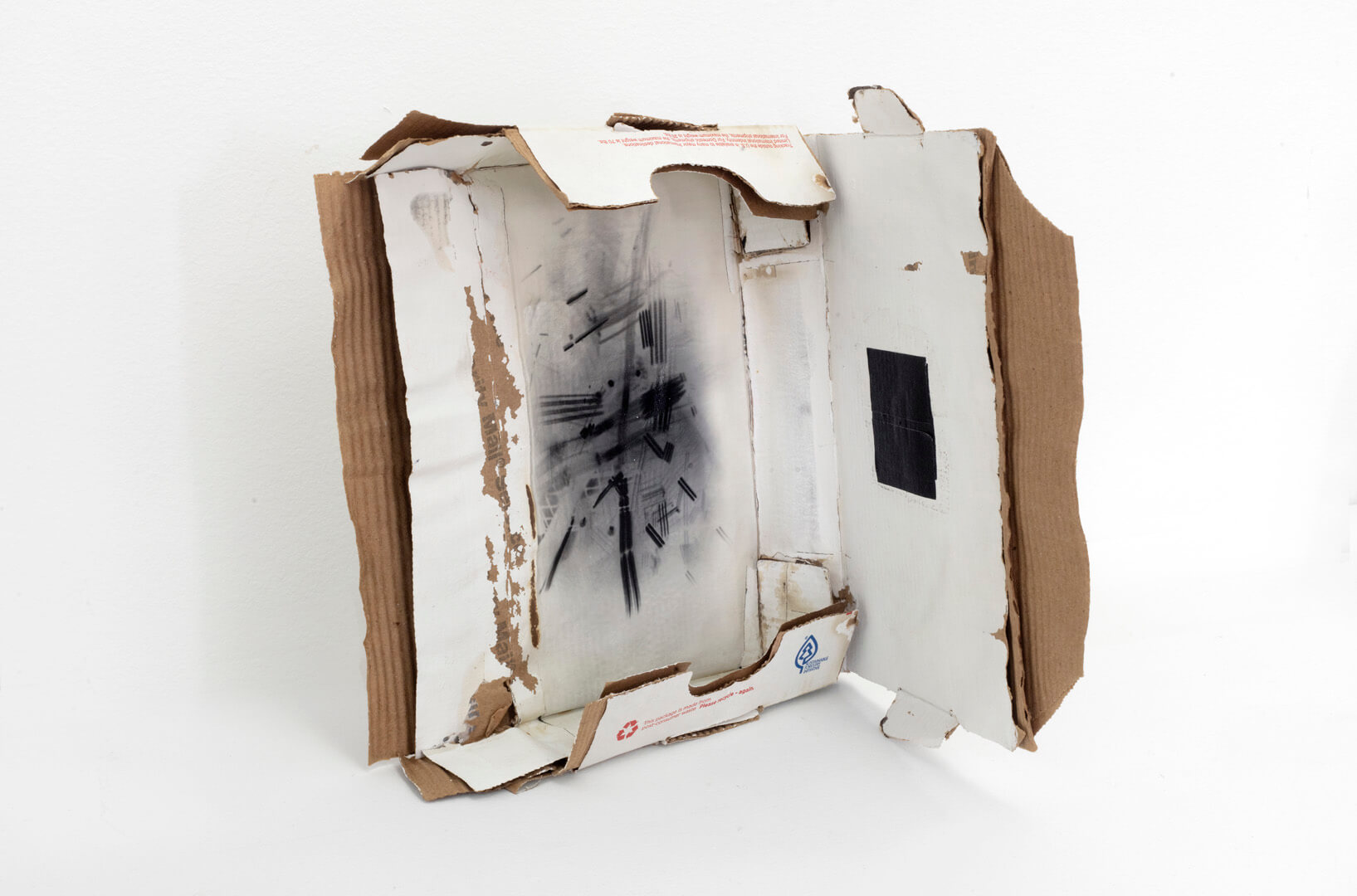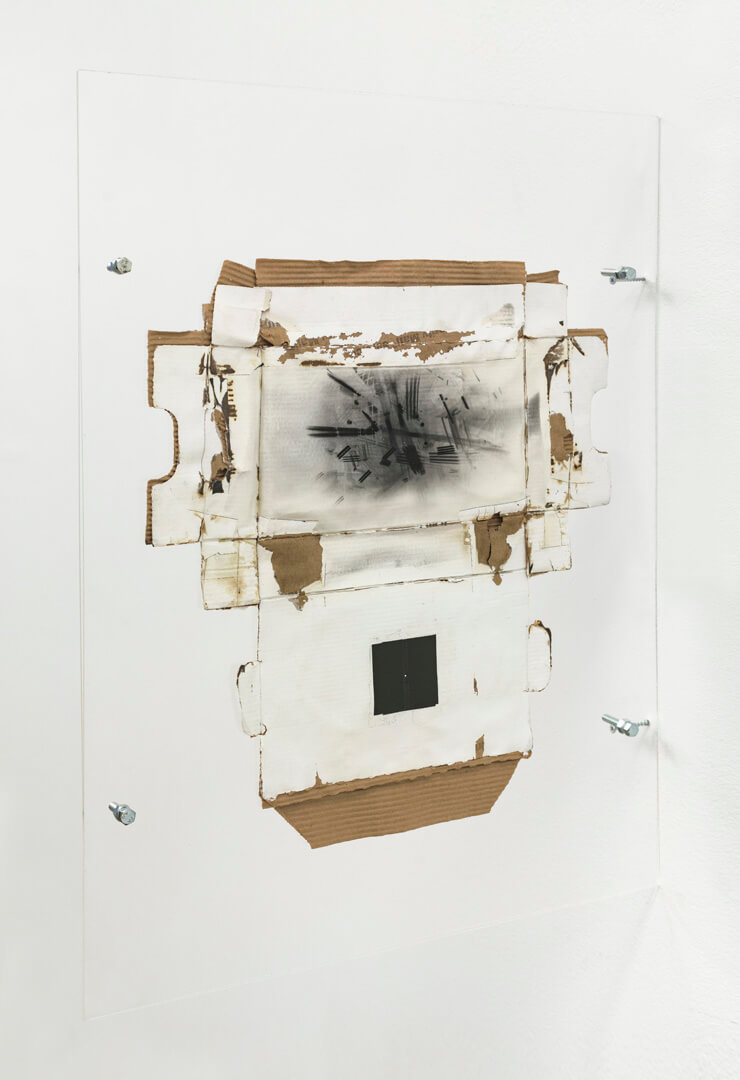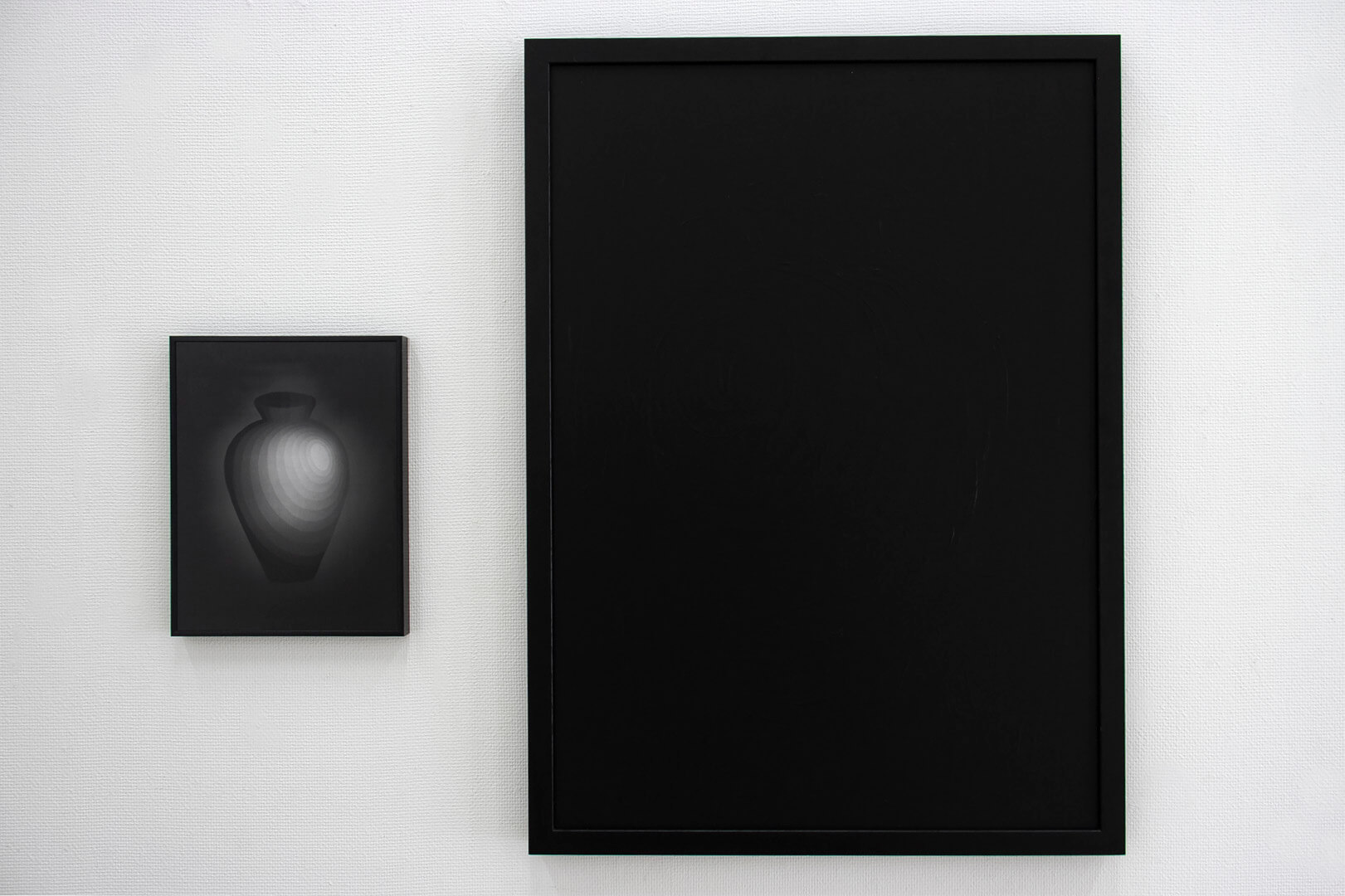
Kyoko Hamaguchi
Kyoko Hamaguchi

Kyoko Hamaguchi
Kyoko Hamaguchi (b. 1989, Tokyo, Japan) lives and works in New York City. Split between her upbringing in Japan and her new life in New York City, her work often investigates movement, transformation, and circulation as she is interested in the betweenness that results from displacement in time and space. By utilizing her daily experiences and society’s systems in her practice, commonplace images are reimagined and abstracted.
Postal Summary
2019 Shipping box, photo emulsion 22.86 x 12.7 x 7.62 cm / 9 x 5 x 3 in (approximately, each version is different)
Photo: Jeremy Lawson

Postal Summary
In 'Postal Summary', Hamaguchi transforms the delivery system into a process for photographic image making. She gets a shipping box at a post office, makes a pinhole in one of its sides, coats the inside with photo emulsion so that its surface becomes photosensitive, and ships it to herself. While moving through the postal system, the box covertly records the shipment process on its photosensitive interior. Once the artist receives the box, she soaks it in chemicals to develop the image. During this process, the box becomes distressed and the shape distorted.

Although her work takes form in many different materials including photography, sculpture, and installation, Kyoko Hamaguchi is consistently invested in the paradoxical potential of analog technology such as pinhole cameras to describe contemporary experience metaphorically. She has shown her work in numerous group shows and a solo show in both Japan and New York City.
God of the Day
2020 Ice, a plastic bottle, tank, plastic tube, steel frame, freezer Dimensions variable
Photo: Susumu Okada

God of the Day
'God of the Day' conveys the material merging of difference. Inside a vitrine, ice-cast gods (each version has a unique set of gods from different religions) melt and become one over the course of the day, their elemental and ideological contents amassing in a single bottle. At the daily closing of the exhibit, the water collected is poured back into the molds of each god, refrozen, and the figures are put back into the vitrine again at the opening of next day. Erasure of difference is expressed through the melting of representation into abstraction and vice versa. Hamaguchi first showed a version of this work in 2015 and has since made two new versions of it.
Time Medium
2017 Black and white gelatin silver prints, acrylic on plexiglass panel 27.94 x 35.56 cm / 11 x 14 (photographs on the left of a pair) Dimensions variable (paintings on the right of a pair)

Time Medium
'Time Medium' is a series of pairs, each consisting of a photograph and a painting. This series is inspired by the Japanese word 'Yaku' which describes both the actions of firing ceramics (such as vases) and developing photographs. Hamaguchi begins by gradually filling in the contours of a drawing of a vase and its background with black paint on a panel. While she paints along the contours of the vase drawing, a pinhole camera takes a long exposure photograph of the entire process. In the photograph, time reveals a value difference which renders the vase three dimensional. The strokes of paint Hamaguchi applied earliest to the panel appear darkest in the photograph as their total exposure time is longest; whereas, the strokes of paint added at the end of the process appear lightest. In the end, the painting is a solid black abstraction while the photograph reveals the image of a vase—an image created by the process itself. In essence, the photograph is the image of something that does not exist.
Kyoko Hamaguchi in conversation with Joachim Pissarro
Joachim Pissarro: So I happen to know you maybe better than others. We were in a class together. You do come from a culture where, contrary to this culture, from a completely I mean, almost opposite culture far from America.
Kyoko Hamaguchi: Yes, the fact I am an immigrant is related to my work because I’m thinking about circulation and relocation. Even though I live in New York City right now, my mind is always circulating between NYC and Tokyo, where I grew up. For example, in this work, I get a package box from the post office, and I make a little hole here in the front so that it’s altered into a pinhole camera. I coat the inside of the box with photo emulsion so that it’s photosensitive. As I ship the box, I reveal the pinhole and start the exposure. The package records the process of the entire delivery. And then, once it gets back to me, I develop the whole box in the darkroom.
It looks very distorted because of the process of being developed and fixed in chemicals. The image shows up on the surface that was covered with photo emulsion and looks almost like an abstract painting, but it’s actually a record of multiple fluorescent lights that were in spaces where the box traveled through while on its trip. As the box relocated, it captured the scenes around it on a single surface, giving the image this feeling of circulation. This is related to my travel from New York to Tokyo, my experience of moving from one place to another. When I travel, I ship these boxes—sometimes internationally from one country to another.

Hunter MFA
The annual Spring 2020 Thesis Exhibition for graduates of the Hunter College MFA Studio Art program represents works by 19 artist graduates of this nationally noted program. Originally planned as a series of physical presentations at Hunter’s 205 Hudson Street campus in Tribeca, but canceled due to the COVID-19 pandemic, the MFA Thesis Exhibition’s digital iteration aims to provide a new, expanded platform for young artists entering the field.













